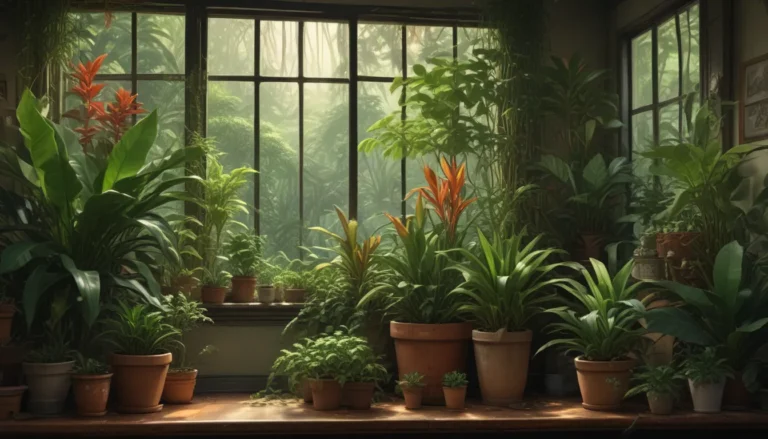A Comprehensive Guide to the Best Varieties of Oleander Shrubs for Your Garden

When it comes to beauty in your garden, oleanders are like an iron fist in a velvet glove. These evergreen flowering shrubs are not only stunning and luxurious with their colorful blooms and vibrant leaves, but they are also remarkably tough and resilient. In this in-depth article, we will explore nine of the best varieties of oleander to grow in your garden, covering their characteristics, growing conditions, and safety considerations.
Oleanders: A Fascinating Addition to Your Garden
Oleanders, scientifically known as Nerium oleander, are hardy plants that can thrive in USDA Hardiness Zones 8-10, and even Zone 11, as outdoor plants. They are tolerant of heat, drought, and salty air, making them a popular choice for gardeners in warm climates. While they may require some extra care in colder regions, they can be grown indoors or in containers to protect them from freezing temperatures.
One important thing to note about oleanders is their toxicity. All parts of the plant contain cardiac glycosides, which can be harmful if ingested. It’s crucial to keep them away from children, pets, and livestock to prevent accidental poisoning. However, with proper precautions in place, oleanders can be a delightful addition to any garden.
9 Best Oleander Varieties for Your Garden
1. Apple Blossom
- Description: Tall shrub with pastel pink blooms and blade-shaped leaves.
- Growing Conditions: Hardy in Zones 8-11, suitable for privacy screens or specimen trees.
- Ideal For: Coastal windbreaks or warm seaside spots.
2. Austin Pretty Limits
- Description: Bright pink blooms and dense evergreen foliage.
- Growing Conditions: Hardy in Zones 8-11, compact form ideal for seaside gardens or container planting.
- Available From: Burpee
3. Calypso
- Description: Magenta blooms on vigorous plants.
- Growing Conditions: Hardy in Zones 8-11, suitable for growing as a multi-trunk tree.
- Ideal For: Coastal areas and seaside towns.
4. Dwarf Red
- Description: Miniature shrub with dark green leaves and crayon-red blooms.
- Growing Conditions: Suitable for patio performance or container planting.
- Best For: Border or low hedge in warmer climates.
5. Hardy Pink
- Description: Large pink flowers with a light fragrance.
- Growing Conditions: Hardy in Zones 8-11, cold-tolerant to about 20°F.
- Unique Feature: Known to rebound after cold damage.
6. Red
- Description: Single blooms in a shade of plain red.
- Growing Conditions: Hardy in Zones 8-11, possibly cold-tolerant to Zone 7b.
- Characteristics: Understated and sultry.
7. Sister Agnes
- Description: Pure white blooms with mild fragrance.
- Growing Conditions: Suitable for training as a single-trunk tree.
- Height: Reaches 10-18 feet tall.
8. Twist of Pink
- Description: Variegated cream and green leaves with deep pink blooms.
- Growing Conditions: Cold-hardy and drought-resistant.
- Available From: Home Depot
9. White Sands
- Description: Abundant clusters of white, single-bloom flowers.
- Growing Conditions: Suitable for containers or low-growing hedges in Zones 10-11.
- Blooming Period: All year long in warm weather.
Safety Considerations and Tips for Growing Oleanders
Before adding oleanders to your garden, it’s essential to ensure the safety of children, pets, and livestock. Keep them away from any areas where accidental ingestion could occur. Additionally, consider the following tips for successful oleander cultivation:
- Monitor the growth and spread of your oleanders to prevent accidental contact.
- Take precautions when handling the plant, including wearing gloves and avoiding contact with the sap.
- Keep oleanders well-watered and fertilized to promote healthy growth and blooming.
- Consider growing oleanders in containers to easily control their environment and protect them from extreme temperatures.
By following these safety guidelines and tips, you can enjoy the beauty and resilience of oleanders in your garden without any risks.
In conclusion, oleanders are versatile, beautiful, and robust plants that can enhance any garden with their vibrant blooms and lush foliage. By choosing the right variety for your climate and growing conditions, you can enjoy these stunning shrubs year-round. Remember to prioritize safety when growing oleanders and take necessary precautions to prevent accidental poisoning. With proper care and attention, oleanders can thrive in your garden and bring joy to all who admire them.
If you have any experience growing oleanders or additional tips to share, feel free to leave a comment below. Your insights could help other gardeners make informed decisions about cultivating these gorgeous shrubs.
For more information on growing and caring for oleander shrubs, check out the following articles:
- How to Grow and Care for Oleander Shrubs
- Gardeners, Beware! All Parts of Oleander Are Poisonous When Eaten
- How to Overwinter Oleander Shrubs
Remember to enjoy the beauty of nature responsibly and safely. Happy gardening!





